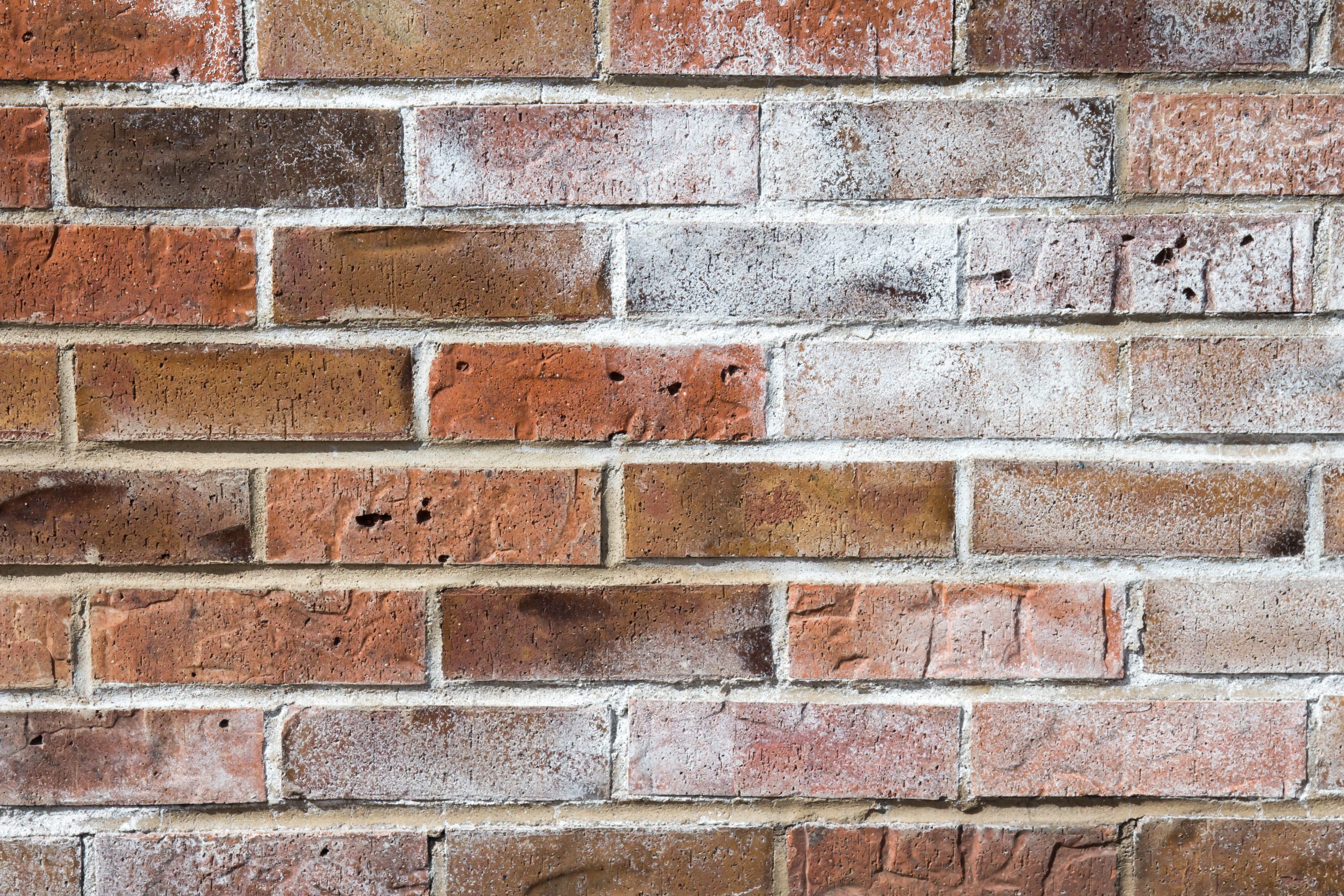EFFLORESCENCE IN BRICKWORK: CAUSES, PREVENTION, AND REMEDIES
If you’ve ever noticed a white, powdery substance on brick surfaces, you’ve encountered efflorescence. As experts in building surveying, we know how critical it is to understand this phenomenon. Let’s unravel the mystery of efflorescence, from its origins to how to manage it.
Why Does Efflorescence Happen?
Simply put, efflorescence is the result of crystalline salts making their presence known on the surface of bricks. Bricks, by their nature, contain these salts. However, they can also pick up additional salts from materials like mortar or even from the ground.
When moisture finds its way into these bricks, it dissolves these salts. As the water then moves to the surface and evaporates, the salts are left behind. And as they dry, these salts crystallize, forming the white residue we know as efflorescence.

Stopping Efflorescence Before It Begins
Knowledge is power, and understanding efflorescence means you can prevent it. Here are some steps to consider:
- Emphasize Drainage: One of the best ways to combat efflorescence is to ensure that water doesn’t stay around your brick structures. Having proper drainage systems, like working gutters and downspouts, is crucial. Remember, if water pools around your walls, it’s a call to action.
- Routine Maintenance: Make it a habit to inspect your brickwork. Address any cracks or gaps immediately. This proactive approach can keep out the moisture, significantly reducing the risk of efflorescence.
- Choose Your Materials Carefully: When building or repairing, go for bricks and mortar that have a low soluble salt content. This small choice can make a big difference in the long run.
Efflorescence Has Appeared, What Now?
If efflorescence has already formed, take heart, remedies exist:
- A Gentle Clean: Often, using a soft brush to dry brush the area, followed by a gentle rinse, can remove efflorescence. If some stubborn spots remain, a mild solution of white vinegar might help.
- Repointing is Effective: If your mortar is the source of excessive salts, consider repointing. This process involves replacing old mortar with new, low-salt mortar, hindering future efflorescence.
- Address Moisture at the Source: Moisture is the main actor in our efflorescence story. Locate its sources, such as leaks or rising damp issues, and address them promptly.
Efflorescence, while a common sight, doesn’t have to be a permanent one. With the right knowledge, consistent checks, and timely interventions, it can be managed effectively. Understanding the cause and taking appropriate measures ensures your brick structures remain both strong and aesthetically pleasing.
With Flettons, safeguarding your property investments becomes hassle-free. Our seasoned team ensures your prospective home is examined thoroughly so future surprises are off the table. Keen on a building survey report that prioritizes your safety? Secure an instant quote via our online calculator or reach out to us directly at 0203 691 0451. Your home’s health is just a call away!

